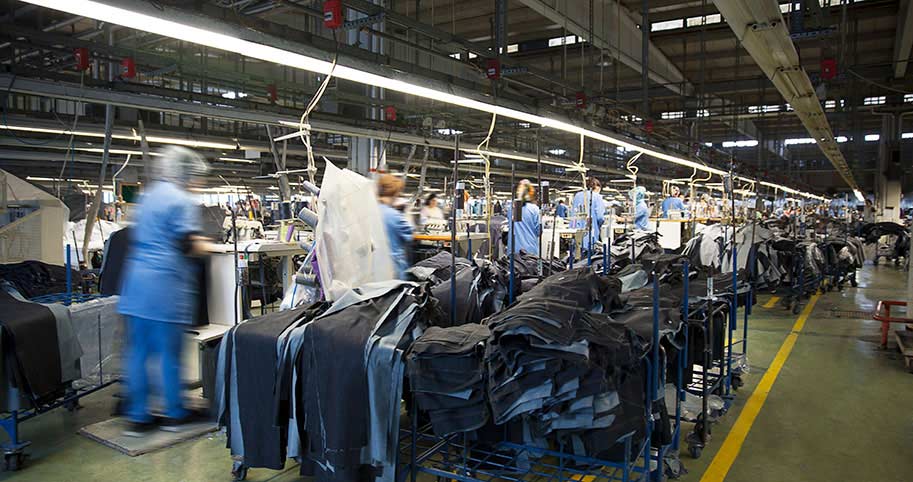
Over the last several decades, worker turnover has reduced. This trend has followed the concentration of employers, meaning that there are fewer but larger employer firms that dominate the market. Initial research into this phenomenon suggests that increasing employer concentration depresses wages.
Turnover in this sense is not a bad thing. Much like unemployment can be a choice that is leveraged by the worker to find better positions, turnover can be a voluntary action that an employee takes to match their skills to a better suited employer. Of course, turnover is almost never ideal for employers because that means they must find replacements and train new employees, so it is in employers’ best interest to reduce opportunities for employee turnover.
But the existing research does not address how the labor market’s power interacts with employer concentration and turnover. To address this question, Walton College faculty Raja Kali and Andrew Yizhou Liu investigated how employer concentration affected the turnover of workers in high-skill and low-skill industries. Again, turnover is not a bad thing for the workers in this study, but a mechanism that allows workers to better match their skills to higher paying jobs.
Kali and Liu’s article, “Labor Market Power and Worker Turnover,” was published earlier this year in the European Economic Review. Their analysis suggests that less educated workers in low-skill industries bear the brunt of employer concentration’s downward pressure on turnover and wages. On the other hand, workers in high-skill industries enjoy most of the benefits from outside options in employment.
Education and Skills Change Who Benefits and Who is Challenged
Kali and Liu found that industries with the highest degree of employer concentration saw 5% lower turnover compared with industries with lower rates of employer concentration. when moving from the 25th percentile of employer concentration to the 75th, turnover decreased by 5%. On the other hand, industries with the most outside options had a 39% higher rate of turnover. Simply put, when employees have other employer options, they leverage those choices while employer concentration dampens workers’ ability to match their skills to new positions.
These changes to turnover, however, were not born equally across the labor market. Employer concentration depressed turnover more strongly among high school educated workers, who saw a decline of 9%. Similarly, high-skill industries benefited more from the increase in outside options.
Kali and Liu say their findings suggest “that workers respond to opportunities outside their local labor markets despite potential switching costs” when they have outside options. Yet Kali and Liu saw “reduced job-switching” when employer concentration was high. This dynamic matters because job-switchers tend to see their wages increase.
Lower rates of job-switching, therefore, could be inducing economic inequality. Kali and Liu argue from their data that “increasing employer concentration could place high-school-educated workers in low-skill industries at a disadvantage.”
College-educated workers in low-skill industries also suffer from employer concentration: they see a 48% lower turnover than their peers in other industries. Still, high-school-educated workers still see greater declines in their turnover rates. And though outside options did not raise posted wages in low-skill industries, neither did employer concentration. The researchers say that this “suggest[s] that increased employer concentration is not associated with higher wages in low-skill industries.”
Low wages are a problem because, as Kali and Liu observe, less educated workers in lower skill industries both “suffer the most from an increase in employer concentration, while they receive limited benefits from more outside options” in those industries. Indeed, the researchers’ analysis shows that college educated workers seem to experience most of the benefits from outside options in low-skill industries. College educated workers in low-skill industries do see a 48% decrease in turnover due to employer concentration compared to their peers, but Kali and Liu note that their high school educated coworkers experience an even more substantial drop off in turnover.
Employer concentration did not greatly influence the turnover rate in high-skill industries. But outside options did contribute to both higher turnover rates and higher wages in high-skill industries. Kali and Liu noted that high-school-educated workers turned over at higher rates than did their college-educated counterparts in high-skill industries too.
Addressing Lower Turnover Rates
These reductions in turnover contributed directly to lower wages. Specifically, Kali and Liu saw a 1.1% decline in average wages when the turnover rate was reduced by 5%. Their analysis suggests that 40% of employer concentration’s downward pressure on wages can be attributed to this reduction in turnover.
This reduction, due to employer concentration, is particularly pernicious in industries with lower productivity. For instance, though manufacturing used to be the backbone of many local economies, the manufacturing job market has contracted alongside the reduction in the industry’s productivity. Because such industries are less productive, they have fewer jobs to go around, so the reduction in outside offers from industry competitors further reduces wages.
Additional analysis tested the impact of sector-specific minimum wages on mobility. Despite Liu’s early findings that an indiscriminately applied higher minimum wage reduced worker mobility, Kali and Liu found that, at least in this case, sector-specific wages could both lessen the decline in wages observed with high employer concentration while also not discouraging workers from changing jobs. Under this kind of wage scheme, a 5% reduction in turnover would only reduce wages by 0.2%.
They are quick to note, however, that sector-specific minimum wages go beyond the scope of their present study, and there may still be other drawbacks, such as a reduction in employment induced by these higher minimum wages. Kali and Liu encourage further research into the topic.
The important takeaway from Kali and Liu’s research is that increased employer concentration appears to be a major driving factor behind the decline in the labor market’s dynamics that has been observed over the last decades. By identifying the problem, we can start to debate and implement better targeted solutions. This is a question of justice as much as anything else since the mechanisms Kali and Liu observe are more likely to influence the wages of immigrant and other marginalized communities, who, though there have been improvements, are still more likely to work in low-skilled industries compared to their white counterparts.







